Now that we have a basic working model for how matter and energy are functioning at the quantum level, as well as having demonstrated a harmonic expansion of these principles into the behavior of plasma formations and planetary energy dynamics, we are ready to propose a truly unified model of a Divine Cosmos.
This model has been hidden in the ancient textbooks, monuments and mythological legends of esoteric science, now hoary with age and waiting to be re-discovered.
This newly rediscovered information also allows us to consider the origin and creation of our known Universe as a blossoming, conscious Ultimate Being, instead of as a sudden explosion of “nothing” that scattered lonely, slow-burning nuclear furnaces into the paralyzing darkness of space.
We wish to thank Dr. Oliver Crane for developing many of the key concepts related to this model in his landmark 1993 paper, now ready to download online with a suggested donation of $1, entitled Central Oscillator and the Space-Time Quanta Medium. [1]
What we have in this chapter is a blending of Crane’s central hypothesis with the knowledge that we have acquired from Johnson’s physics as well as the ancient Vedic scriptures, which we feel has given us a more complete and unified model that fits together with the observable data.
6.1 CLUES ABOUT THE UNIVERSE FROM ANCIENT MYSTERY SCHOOLS
In almost all esoteric spiritual traditions, the Universe begins with the Oneness, which is shrouded in mystery. It is said to have the shape of a sphere, and we shall refer to this as the Universal Sphere.
Or, from a mathematical perspective, we can think of this Sphere as a pure point, which has no “time” and “space” as we now think of it, thus both infinitely large and infinitely tiny, depending on your perspective from within it – and a point would indeed have spherical symmetry.
Though we cannot truly speculate on its contents, its identity shows up in modern Russian physics as the “Absolute Physical Vacuum” or APV.
It is quite mistakenly referred to by Terletskiy as “useless” since it has no movement within itself – and without movement, there can be no change, no time, no energy as we now think of it.
The traditions then tell us that the Oneness then chose to divide itself. This point is expressed in esoteric science as “the One divided into the Two.”
All of this occurs within the Sphere, which does not change its shape or form a double of itself like we would see in the division of a cell. This simple division of the energy within the Sphere created two main bodies of aether, which for simplicity’s sake we will refer to as aether 1 (A1) and aether 2 (A2).
Ultimately, we propose that all of Kozyrev’s effects and all aetheric density levels or planes of space and time are caused by the dynamic interplay of these two basic forces in the creation of matter, as also seen in Rod Johnson’s model of quantum physics.
The next excerpt from Physics News suggests that two different major densities of aether (i.e. “dark matter”) are at work in galaxies and superclusters. It is not necessary for the reader to understand this entire paragraph, simply the emphasized portion:
DARK MATTER, LIKE LUMINOUS MATTER, IS HIERARCHICAL. That is, it congregates at the galactic level and at the level of galaxy clusters.
This view is based on new observations made with the orbiting Japanese x-ray telescope ASCA, which recorded x-ray emissions from gas in the Fornax galaxy cluster (Y. Ikebe et al., Nature, 1 February 1996).
The density of dark matter at any location is deduced from the density of the hot (up to 10**8 K) gas, which is probably held in equilibrium by the gravitational influence of the unseen dark matter thereabouts.
The ASCA scientists suggest that one explanation of their measurements is the presence of two different kinds of dark matter.
This is in keeping with some hybrid cosmological models which propose that cold dark matter (e.g., axions) influences affairs at the galactic level and hot dark matter (e.g., massive neutrinos) at the cluster level. (Science News, 10 Feb. 1996.) [emphasis added]
The above is just one of many pieces of the puzzle that suggest that two main forms of “aether” (dark matter) are at work in the Universe.
Again, our key starting point here is that we have a Universal Sphere that has divided into A1 and A2 within itself. These aethers have slightly different vibrational speeds, expressed in the above excerpt as “hot” and “cold.”
6.2 A1 AND A2 COUNTER-ROTATE INSIDE OF EACH OTHER
Next, and most importantly, we must see that the Universal bodies of aether 1 and aether 2 can counter-rotate relative to each other, or swirl in opposite directions, without causing much disturbance to each other:
- A1 swirls clockwise while A2 swirls counterclockwise at the same time, and they will mostly pass right through each other in the Sphere as this movement continues.
- Since A1 vibrates slightly faster than A2, A1 will also rotate slightly faster than A2 in the Sphere. This shall be seen as an important point later.
The bodies of A1 and A2 are fluidlike, in that they have spherical “field bubbles” that have the ability to flow around.
This is supported by the work of Kozyrev, Mishin and others, who showed fluidlike activity and “currents” in the aether.
However, these “field bubbles” also have inner Platonic Solid geometry that causes them to remain bonded in a relatively stable matrix formation with their neighbors.
A1 bonds to itself as one spherical entity, and A2 bonds to itself as a separate spherical entity. Hence, this fluid-crystal geometric quality of A1 and A2 keeps them from blending into each other (homogenizing) all at once and losing their counter-rotating momentum.
And, as they counter-rotate, their “field bubbles” can slip past each other like a superfluid, even though they are under very high compression. In a sense, this is similar to how people can pass through each other on busy city streets while walking in two opposite directions.
6.3 A1 AND A2 CONDUCT VIBRATIONS LIKE A SINGLE FLUID
Again, the fluid-crystal matrix qualities of A1 and A2 cause them to preserve their own inner geometric order, much like an elaborate Vedic mandala pattern, while they counter-rotate.
This could be thought of as a form of inner magnetic attraction. However, if we start actually sending ripples (pulsations) through this Universal Sphere, the field bubbles of A1 and A2 will be bumping into each other, conducting the vibrations (pulsations) as a single, unified fluid.
These pulsations are the actual, true definition of torsion waves. This concept of A1 and A2 as a unified fluid is extremely important in understanding how the Universe actually functions, as it explains that all levels of aether, regardless of their density, are comprised of both A1 and A2.
Thus, A1 and A2 could be thought of as the precursors to the Octave of aetheric energy densities that we discuss. This will become clearer as we progress.
6.4 A1 AND A2 COLLIDE TO FORM ELECTROMAGNETIC ENERGY (MATTER)
Most of the time, A1 and A2 slip around each other as they pass. However, if their geometries are properly aligned, they can and will blend together.
Electromagnetic energy is formed when the field bubbles of A1 and A2 merge together.
Of course, we know that electromagnetic energy is the building block of all physical matter, according to Einstein and others. Such merging is obviously not allowed in conventional “particle” models.
So, let us now take this foundation and advance the next series of concepts, which operate on a fluid-dynamic model:
- The two fluidlike aethers are indeed counter-rotating inside of a spherical space, continually and easily flowing past each other with qualities of a “superfluid,” meaning that unless their particles collide, there is literally zero resistance to their movement.
- As the two fluidlike aethers pass each other, some of their field bubbles will directly collide.
- When their geometric frequencies are properly aligned, the two different forms of energy of A1 and A2 merge together.
- Once A1 and A2 merge together, they are immediately compressed by the material that surrounds them on all sides.
- Similar to how a spherical bubble of air forms in water, the compression of the merged energies of A1 and A2 forms a miniature sphere.
- This creates a tiny replica of the Universal Sphere,a perfect microcosm of the macrocosm.
- Within this tiny sphere, the aetheric energies of A1 and A2 will continue to counter-rotate and swirl around each other just like they do in the Universal Sphere.
- This forms a vortex, which takes on a form of “gravity” by attracting A1 and A2 into itself via the Biefield-Brown effect, as explained in Chapter Two.
- As these tiny spheres continue to attract more and more field bubbles from A1 and A2, they will gradually grow in size. This is not much different than adding new droplets to a spherical bubble of water and watching it expand in size.
- The “units” that are formed in this process form matter as we now think of it, via Johnson’s model. Without A1 and A2 blending together, there is no observable matter.
With all that is written above, we have now set up the most important basic properties in this “aether” model of the Cosmos.
Our next step is to map out exactly what structures would appear inside this Universal Sphere, meaning where the greatest number of tiny spherical “units” would form.
Part of the answer can be found when we ask, “Exactly what will happen when we have a sphere-shaped body of liquid that rotates?” Then the rest of the answer is found when we ask, “Where will the greatest number of collisions between “field bubbles” be?”
6.5 VORTEXES COLLIDE IN THE CENTER, FORMING A SMALLER SPHERE
We have already explained in previous chapters how the spherical torus is a natural “whirlpool”-type formation that appears in a fluid, caused by rotational movement.
In the rotating sphere of fluid, you see a whirlpool on both the north and south poles; on one pole the whirlpool will be spiraling “in” towards the center and on the other pole it will be spiraling back “out” from the center.
Remember that both A1 and A2 exist in the same sphere, but they counter-rotate in opposite directions. This means that they will both create spherical torus formations that will share the same axis in the same sphere.
So now let us assume the following:
- The first aether (A1) spins in a clockwise motion, and this causes a whirlpool to flow in through the north pole of the Sphere and out through the south pole of the Sphere.
- The second aether (A2) spins in a counter-clockwise motion, and this causes a whirlpool to flow in through the south pole of the Sphere and out through the north pole of the Sphere.
If we consider the image of a ship that is caught in a whirlpool, we will remember that it spins around and around in giant circles, and continues to move faster and faster as it gets closer to the center of the vortex, where it is eventually crushed and submerged by the incredible pressures that are created there.
So, when we take this whirlpool analogy and use it with our sphere, this means that the central vortex-axis of the sphere will have the greatest speed of movement, and also the greatest pressure.
A1 pushes towards the center from the North and A2 pushes towards the center from the South. They both collide in the exact center of the Universal Sphere with the greatest speed of movement and the greatest pressure.
After A1 and A2 have formed and their counter-rotational movement begins, the moment when this vortex collision first takes place in the center is what mainstream scientists would call the “Big Bang.”
The south-moving pressure of A1 collides with the north-moving pressure of A2, and much more of the field bubbles of A1 and A2 begin to merge together in this area than in any other.
They form into the shape of a sphere in the center,since there is pressure pushing in on them from all sides.
Electromagnetic energy is created, according to Johnson’s model of physics, forming visible light and matter.
This sphere of energy begins to grow at first, as it absorbs more and more of the fluidlike energy “particles” of A1 and A2 into itself.
We could also think of this event as the birth of the first star in the Universe.
Luminous plasma is the original, basic form that is produced as the two aethers blend together.
The next image that we see below comes from the work of Dan Winter, showing the whirlpool to the left, the torus formations in their opposing rotation in the middle and then a diagram from Dr. Walter Russell to the far right that shows how they come together and form a sphere.
(From the image, we can see that Winter makes the simple mistake of not seeing that the two tori are both contained in the same spherical space and are able to swirl inside of each other, since he has visualized them as more akin to two donuts that are sitting on top of each other.)

Figure 6.1 – Dan Winter and Walter Russell’s image of counter-rotating vortex formations.
Dr. Walter Russell had a 39-day period of mystical illumination where he was capable of seeing much of how the Universe was structured and functioned, developing many of the key points of this new cosmology.
From his diagram to the far right, we can get a good visual image of exactly how this Central Sphere is created by the two intersecting “whirlpools” of energy from either direction.
Other illustrations by Russell, not pictured here, have a clearly visible circle in the diamond-shaped central area between the two spirals to show the sphere more easily.
6.6 ESOTERIC UNDERSTANDING OF “GREAT CENTRAL SUN”
Since we are indeed dealing with a sphere that is a luminous plasma, many esoteric schools of thought refer to this Central Sphere as the “Great Central Sun.”
Furthermore, this is also the basis for the mystical importance of the number three. If A1 is seen as “male” and A2 as “female,” then in their “sexual” union they form an offspring that is a small image of the One, made from the material of both of its “parents.”
We see Trinity concepts emerge in many spiritual traditions, including the Vedic faith, the Egyptian faith and the Christian faith.
The core archetype, as expressed by renowned scholar Joseph Campbell, is of a father and mother that form an androgynous son that is both male and female.
This can be seen, for example, in the Egyptian myth of Osiris the father, Isis the mother and Horus the androgynous son.
This is one example of how “exoteric” or non-metaphysical trinity doctrines could be shared amongst the uninitiated, while the stories cleverly concealed the deep, esoteric scientific facts with symbolism.
6.7 CENTRAL SPHERE BEGINS OSCILLATING (VIBRATING)
So, we now have the birth and growth of the Great Central Sun. Next, we discover that a pulsating rhythm is established in this central sphere, as follows:
- Once the luminous plasma that is forming within the central sphere reaches a certain size, the incredible surrounding pressure of the whirlpool vortex movements of A1 and A2 causes the sphere to collapse in on itself and implode.
- This implosion jams the luminous plasma together ultra-tightly.
- However, the plasma resists being compressed beyond a certain maximum level of density.
- So, just like an elastic ball would do under compression, the entire plasma sphere collectively bounces back against the surrounding pressure,causing it to explode back to its original size.
- As soon as the plasma sphere reaches its original size, the tremendous surrounding pressures cause it to implode once again.
- Since the sphere still cannot handle being compressed that tightly, it again explodes, and so the cycle continues, the sphere continually growing slightly larger each time due to the steady increase of the amount of energy streaming into it.
- This sphere is now what Dr. Crane calls a “central oscillator.”
In this model, the main energy fields of A1 and A2 in the Universal Sphere will maintain constant, steady speeds of rotation relative to each other, with A1 slightly faster than A2.
This also means that the implosion-explosion cycle of the central sphere will pulsate with a steady, unchanging rhythm, breathing in and out, in and out. For this reason, esoteric traditions refer to it as the “Breath of the Divine” or the “Universal Heartbeat.”
6.8 OSCILLATIONS OF CENTRAL SPHERE HARMONIZE WITH THE “SECOND”
Clear evidence also points to the fact that each major pulsation of the Great Central Sun is in perfect harmony with the unit of time that we call the second.
This probably seems absurd at first, but we shall see in the next chapter that it is exactly where we are led by the data; and it also traces back to the ancient past, both in the Sumerian and Mayan civilizations, as readers of our previous volumes already will know.
Let us also remember that the second is not the only time interval that we need to look at, as when we are dealing with vibration we will have many different wavelengths all moving together, just as we have many different overtones that ring when we pluck a musical string.
Dr. O. Crane believes that there is a different “nested” sphere within a central oscillator for each major pulsating frequency that it produces; and thus he feels that any star will be found to have a multi-layered structure like an onion.
As a hypothetical example, the outer sphere may pulsate once per second, the next inner sphere may pulsate two times per second, the next three times per second, the next five, the next eight and so on, following the “phi” ratio.
Other ratios, such as the square roots of 2, 3 and 5 as well as “e” and pi, are likely to factor in as well.
So again, based on this assertion, we will see various harmonics of pulsation that are much smaller and much larger than the second, but they will always be related to it in exact intervals.
6.9 SONOLUMINESCENCE: PROOF OF CENTRAL OSCILLATOR THEORY
As we indicated in Convergence III, it is interesting to point out here that a nearly exact duplicate of this “central oscillator” phenomenon has been demonstrated in the laboratory by the little-understood phenomenon of “Sonoluminescence.”
This was first observed in 1934 by H. Frenzel and H. Schultes, and brought to the modern eye by D.F. Gaitan in 1988 and S. Putterman et al. in 1995.
The overall nature of this experiment rather closely mimics the conditions of the Universal Sphere and the central oscillator of luminous plasma that is then formed.
In this experiment, a spherical glass flask is filled with water, and vibrated on either side with high-intensity sound waves that are directed towards the center of the sphere. Then, a single tiny air bubble is introduced by a thin glass straw into the central area.
The bubble is able to be suspended in the exact center of the jar by the colliding pressures of the sound waves, which in and of itself is an interesting fact of harmonics. Then, the bubble begins an even rhythm of collapsing and expanding.
Each time that the bubble collapses, it gives off visible light, forming a luminous plasma, and the pulsation is so rapid that the light appears to be constant.
Surprisingly, Putterman et al. determined that the internal bubble compresses to 1/100,000th of its original size each time, and vibrates with extreme regularity every 100 millionths of a second, giving off a trillion times more energy than any single atom in the tiny bubble could have gained from the sound waves.
Dr. W.A. Steer later determined that even a one-millimeter deviation in the flask from being a true sphere will cause the effect to dramatically weaken. Figure 6.2 shows the basic experimental setup for a Sonoluminescence experiment.
It was taken from Dr. W.A. Steer’s web page, which is no longer available online at this time.

Figure 6.2 – Dr. W.A. Steer’s basic Sonoluminescence experimental setup.
Sonoluminescence remains an unexplained mystery for mainstream science. First of all, we should notice that the pulsation of the bubble is in exact intervals of 100 millionths of a second, showing its precise harmonic connection to the second as a unit of time.
Secondly, no one has been able to figure out why the simple compression of an air bubble would create visible light at such high energetic intensity – there is nowhere near enough energy for any fusion process that we now know of to occur.
In our new model, we would say that the forced combination of A1 and A2 inside the air bubble produces the visible light that is seen as the bubble collapses each time. Thus, a miniature “matter generator” is formed by duplicating the same conditions as existed at the formation of our Universe.
Even more interestingly, recent research has shown that more than one rate of pulsation for the central oscillating sphere can be produced in the laboratory:
SONOLUMINESCENCE CAN BE CHAOTIC. Previously, researchers have observed sonoluminescence to be remarkably stable: when applying sound waves to a liquid and thereby creating light flashes from collapsing bubbles, they observed that the time between successive flashes remained constant.
However, new experiments, performed by R. Glynn Holt of JPL (818-393-6946) show that slight adjustments in experimental parameters (such as sound wave frequency and intensity) away from these stable conditions can lead to variations in the time between successive flashes.
Taken as a sequence, the variations in successive flashes exhibit chaotic or other non-periodic characteristics.
For example, the experimenters observed quasi-periodic behavior in which the timing between flashes could be broken down into two frequencies… (R. Glynn Holt et al., Phys. Rev. Lett, 28 February 1994.) [emphasis added]
So, in the humble sonoluminescence experiment, we have a central oscillator of luminous plasma that is formed, which is giving off light and can be made to pulsate at two different frequencies.
This gives more scientific support to the concept that simple pulsation can cause electromagnetic plasma energy to form in the center of a spherical fluidlike area of volume.
While on this topic, it is also interesting to point out that there are very high-energy luminous objects in the Universe that are seen to pulsate rapidly, known as “pulsars.”
Much of their observed behavior still remains a mystery to mainstream science, but such objects are perfectly accounted for in this new model.
6.10 PULSATIONS OF “GREAT CENTRAL SUN” REVERED IN ANCIENT TRADITIONS
As we had stated previously, in the next chapter we will establish the second as a key harmonic time period for the pulsations of the Great Central Sun.
Native Americans, (who appear to have inherited this knowledge from an ancient advanced civilization,) symbolize this Universal Heartbeat by the drum, which is beat at a steady, unchanging rhythm.
The pulse is typically very close to being four beats per second, with a stress on the first of each four beats.
This suggests, again, that all human beings have a deep, inner awareness of the importance of the second.
Drummers know that a majority of pop songs are 120 beats per minute, which gives two beats per second just like a heartbeat, perfectly in tune with the Great Central Sun.
Slower songs have a relaxing effect and faster songs have an exciting effect. The human heart is known to have an average pulse of 60 beats per minute.
Let us not forget that these rhythmic pulsations of the Great Central Sun can also be likened to that of a breathing movement. In the Vedic scriptures it is said that “the science of breath is the single deepest secret of all esoteric traditions.”
Meditation is used as a means of emulating this energy process. By imagining the slow, rhythmic breathing movements of your own body in meditation as being the Universal Heartbeat, and / or the counter-rotating movement of the arms and legs while walking, you can experience higher states of consciousness, feeling that you have merged your own being with the Ultimate Being.
Hindu traditions also teach the Initiates to match their breaths with certain numbers of beats in their heart rate, thus creating two steady rhythmic frequencies between the heart and the movement of the diaphragm and lungs.
6.11 CENTRAL OSCILLATOR CREATES NESTED SPHERES OF ENERGY DENSITY
The next point that we need to address is that wave-based structures in the aether are created as the central oscillator pulsates.
Again, both A1 and A2 behave as fluids that are continually swirling through each other in counter-rotational movement, and that they can act as one unified fluid when vibrational pulses pass through them.
Therefore,
- The continual pulsations of the central oscillator produce spherical wave-pulses or ripples (torsion waves) which will move out through the collective body of aether formed by A1 and A2.
- These torsion-wave-pulses then reach the extreme outer boundary of the Universal Sphere.
- Once the pulses reach this boundary, they bounce off of it.
- They are then reflected directly back towards the exact center of the Universal Sphere.
The next point that we need to see is that:
- The Great Central Sun obviously pulsates faster than the time it takes for the spherical pulses to travel to the outer boundary of the Universal Sphere and then be reflected back.
- Multiple pulses travel throughout the collective medium of A1 and A2 in even sequences of time, since the Great Central Sun pulsates at a steady rhythmic frequency.
- The out-going spherical pulses collide with the in-flowing spherical pulses in various layered areas of the Sphere as they continue their steady patterns of movement.
- These colliding wave-pulses form perfectly spherical “standing waves” that remain still, in the same place, existing in a state of balance.
- Multiple “standing waves” then nest around the Great Central Sun, giving a layered, onionlike appearance to the vibrational energy structure of the Universe. The Great Central Sun will be in the middle, and the spherical standing-wave layers will extend all the way out to the very edge of the Universe.
6.12 ANCIENT SCIENTIFIC KNOWLEDGE AGAIN PRESERVED IN SYMBOLIC FORM
This universal structure of ‘nested spheres’ is a key feature of esoteric science, as Manly Palmer Hall explained in Secret Teachings:
The homely onion was revered by the Egyptians as a symbol of the universe because its rings and layers represented the concentric planes into which creation was divided according to the Hermetic Mysteries (from the visions and teachings of Hermes.)
Indeed, the concept of a set of “nested spheres” that all share a common axis has been secretly encoded worldwide in ancient mythology by referring to it as the “Cosmic Tree” or “World Tree.”
In our previous volume we demonstrated how the World Tree is the single most prevalent ancient teaching throughout mythology worldwide, literally emerging in almost every ancient culture that has ever been studied, from the Maya to the Chinese to the Siberians to the Egyptians to the Scandinavians to the Celtics.
Consider Figure 6.3, which is an image of the Shinto goddess Quan Yin:
 |
 |
Figure 6.3 (L) – The Shinto goddess Quan Yin, showing hidden symbolism of the spherical torus and nested spheres.
Figure 6.4 (R) – Manly Palmer Hall’s rendition of the Yggdrasil, showing clear evidence of spherical-torus structure.
As we study this image of Quan Yin, we can clearly see that her body was intended to illustrate the axis of a spherical torus, and that multiple layers of “nested spheres” surround her.
Furthermore, her elaborate headdress shows the energy vortex of A2 reaching up into a smaller cone, while the wider cone of A1 is seen behind it, moving in the opposite direction.
Figure 6.4 is Manly Palmer Hall’s rendition of the Scandinavian world tree legend known as the “Yggdrasil.” Though his drawing does not adequately illustrate every concept, namely that of the “branches of the tree” actually being spheres nested inside of each other, we can clearly see the hidden spherical torus that the legend is describing.
The Yggdrasil legend is particularly remarkable because of the serpent that is said to be coiling around the base of the tree.
This is an obvious illustration of the whirlpool-style action of the vortex movement of A2 as it accelerates into the center of the Sphere. As we go along in this chapter, we will see that this image reveals other secrets as well.
In our previous volume we speculated that the worldwide prevalence of this myth is due to the attempts of human seers to visually explain the spherical-torus energetic structures of the Universe that they witnessed when traveling out-of-body.
6.13 EACH SPHERE IN THE “NEST” HAS A DIFFERENT AETHERIC DENSITY LEVEL
Thus, layer after layer of spherical energy fields will form between the ‘central oscillator’ and the outer boundary of the known sphere of the Universe.
These “standing waves” will be nested together much like the layers of an onion, and the interactions of A1 and A2 at their boundary surfaces will form small amounts of luminous plasma, generally too weak to be visibly detectable.
More importantly, due to the wave-interference patterns being different for each sphere, each of these nested spheres will have a different aetheric density.
Obviously, there is more energetic power and strength when a pulsation is first excited away from the central oscillator than when a pulsation has traveled all the way out to the edge of the sphere and back.
As the impulse continually causes field-bubbles to collide with each other, a greater amount of the momentum is lost.
Therefore, the areas of highest aetheric density will be towards the center of the sphere, since these areas will have the strongest, most energetic out-pressing force with the weakest, least energetic in-pressing force to counterbalance it.
Consequently, the spherical areas closest to the far edge of the sphere will be lowest in density, since the push-pull of the spherical waves will be just about equal, thus reducing the amount of compression and pressure.
So, the spheres that are closest to the central oscillator will have the highest density and pressure, and they will continually decrease in density as we move towards the outermost edge.
6.14 THEORETICALLY INFINITE NUMBER OF DENSITY LEVELS
The next key is to understand that there are theoretically an infinite number of different spheres all nested inside of each other, similar to a fractal formation.
However, they are well organized into layers, so that their infinite structure is not immediately apparent.
If we have seven major densities, forming seven major spheres, then within each of those densities are seven layers of sub-densities, and within each sub-density there are seven layers of sub-sub densities, and so on.
Thus, there is a smooth transformation from the highest density at the center of the sphere to the lowest density at the outer edge, since there are infinitely gradual changes as you move through all the nested harmonic levels.
The recent discoveries related to fractal formations have shown us that “infinite recursiveness” is one of the most fundamental properties in the Universe.
As you go smaller and smaller in size and scope, you continue to see the same structures emerging. The more sophisticated your instrumentation is, the subtler your measurements can become. This can also be done with the study of sound or color as well.
Despite the infinity of sub-levels within each major density, as we move into the Octave level there is again Oneness and singularity.
Therefore, it is important to remember that there is a ceiling for how high these vibratory levels can go. They are infinite within the parameters of the Octave, but you cannot move outside of those main parameters.
The Octave is a basic law of harmonics and vibration, seen in the study of music. This has been covered more deeply in previous volumes.
6.15 QUANTIZED WEIGHT CHANGES EXPLAINED
We now have the information that we need to explain one of Kozyrev’s most anomalous observations, namely that the rising or falling of an object’s weight always occurs in certain quantized intervals.
From a perspective where all levels of aetheric density are visible, a displacement of energy from one density to another might only appear similar to a change in geometry, color or sound.
However, to our third-density sensory organs and instruments, when an object displaces into a higher density it seems to disappear, much as David Hudson’s monatomic iridium did once it reached 850° Celsius.
Now let’s return to Kozyrev’s model. In the case of molecules, when their weight increases we are having higher-density energy flow in to become matter, and when their weight decreases, some of their matter-energy is being displaced into a higher density.
Most of this action is occurring in the nucleus (central oscillator) of the atom, since that is where the greatest amount of “mass” resides.
Therefore, what appears to us as a fluidlike increase or decrease in an object’s weight will always involve discrete spherical energy levels either displacing into a higher density or flowing back down from a higher density into our own.
In all cases, as the energy composition of the individual spheres changes, they will either appear or disappear spontaneously from our density. This is why we see “quantized” weight increases or decreases in Kozyrev’s experiments.
6.16 GRADUAL INCREASE IN DENSITY LEVELS AS SPHERE EVOLVES
Another interesting factor that we should consider is that up to a certain maximum expansion point, the central oscillator will continually take on greater amounts of A1 and A2, forming more luminous plasma and thus increasing its physical size.
As the size of the central oscillator gradually increases, the areas of higher density will spread farther and farther away from the center, like slowly expanding ripples on the surface of a pond.
If we hypothesize that the outermost edge of the Sphere is under constant pressure and cannot be increased in size, then we can imagine the entire inside area of the sphere taking on a higher and higher level of aetheric density and compression over time.
Indeed, eventually all of the available energy of A1 and A2 within the Sphere would be consumed, at which time maximum aetheric density has been attained, and gravitation-style forces will take over.
Then, the aetheric energy at all density levels will quickly begin to collapse back into the center. This is the shift into Oneness that esoteric traditions insist is shrouded in mystery, similar to the concepts relating to a black hole where there is no space and no time.
It is believed that eventually the entire Universe must collapse back into this point of singularity, and this would represent the conclusion of the path of evolution for this Ultimate Being.
6.17 STAR EVOLUTION
This process of expansion and contraction can be seen in the evolution of stars, where they start out as small Sun-like objects and continually increase in size.
This is typically explained as the stars consuming greater amounts of their nuclear fuel, thus expanding as their pressure reduces, but it fits perfectly in the new model. As stars grow larger, their color shifts from yellow to orange to red, and they eventually become “red giants.”
Once our Sun becomes a red giant, it will have engulfed all of the planets in their current positions. Once the red giant reaches its maximum size, it collapses, and this sudden rush of imploding energy soon forms a brilliant flash of white light, known as a supernova.
After the supernova has occurred, a highly compressed and very small area of matter remains, known as a white dwarf, which eventually cools further into a brown dwarf.
In conventional models, it is calculated that one teaspoon of the matter in a white dwarf would weigh more than the entire Earth.
It is also interesting to think about the fact that our Solar System is positioned right near the outer edge of the Milky Way Galaxy. Could it be that an expanding sphere of higher-density energy is now moving into our own area, closer to the edge of the Galaxy?
In Chapter Eight we will survey the hard, scientific data, gleaned from observational evidence, which shows that these “nested spheres” of energy density do exist at the galactic level, and in Chapter Nine we will discuss how such an apparent change in the density of the local interstellar medium (LISM) is affecting our Solar System now.
6.18 THE ENTIRE UNIVERSE IS ROTATING
The next major point in this chapter is to see that the entire Universe must be rotating. This is based on our simple premise that A1 rotates faster than A2. As matter is created in the Universe, it is all being simultaneously affected by the extra momentum of A1.
We already know that rotational motion exists at the quantum, interplanetary and galactic level, so based on the fractal principle we should also see this in the Universe. In the next chapter we will survey the scientific evidence to back up this argument.
6.19 A FLAT DISC AREA OF EJECTED MATTER FORMS IN THE SPHERE
Our next point explains why matter will take on a “flat” disc shape in the Universe, such as in galaxies. This is extremely important for the reader to understand at this point:
The greatest amount of pressure in the entire Universal Sphere will be the inflowing of A1 and A2 along the north-south axis.
This also means that from a perspective of pure geometry, the least amount of pressure will be along the ecliptic plane, which is the flat area that spreads out along the Equator of the Universal Sphere, perfectly horizontally.
Physicist Dr. O.E. Wagner, who also has developed an aetheric cosmological model, refers to this low-pressure area as a “zone of cancellation.”
The regions of greater pressure that are above and below this ecliptic plane will push in on it from the top and bottom, creating a zone of compression not unlike the flat line that forms between oil and water when they are at a state of rest. Dr. O.E. Wagner refers to this as “destructive interference.”
This low-pressure area is ultimately filled with matter that is thrown off from the Great Central Sun. The throwing-off process in the Great Central Sun is also caused by the fact that there is more pressure at its north and south poles than there is along its equator:
The imploding vortex-energy of A1 and A2 causes a higher pressure to form on the top and bottom of the Great Central Sun than the pressure that is formed along its equator.
We remember that the entire combined structure of A1 and A2 in the Universal Sphere is in a state of rotation, with A1 moving slightly faster than A2. This means that all matter-energy that is formed will rotate as well.
Thus, since the entire Universal Sphere is rotating and a low-pressure zone exists along the ecliptic plane, an out-spraying centrifugal force is created, similar to how water droplets will shoot off of a dog’s body when it shakes itself dry.
- The Great Central Sun continues its breath-like pulsations, while rotating and being compressed more strongly from the top and bottom than along the equatorial region.
- As a result of this system, some of its combined A1-A2 matter-energy is released in bursts from the equatorial region.
- These bursts of matter-energy then spray out along the low-pressure zone of the ecliptic, radiating out in spiral form, similar in structure to the arms of a galaxy.
- If the entire Universal Sphere were not rotating, then we might expect to see straight-lined spokes along the ecliptic plane as energy pathways. However, the “drag” that is created by the rotation of the entire Universal Sphere causes these rays to curve into a spiral structure, just as the arms of a spiral galaxy appear.
- Geometric forces, such as the four nodes that comprise the middle of the octahedron, can cause the bursts to be released in two ways:
- Across the entire equator of the Great Central Sun at the same time. This forms rotating rings that will balance out at certain orbital position. Or,
- From single areas along the equator. If a burst is released from one node in the geometric energy structure, such as one of the four nodes at the equator of the octahedron, then smaller spheres of matter are formed that will soon duplicate the behavior of the Great Central Sun.
Once new spheres have been ejected out into the ecliptic plane, the standard “rules” then apply:
- The counter-rotating energies of A1 and A2 in the smaller ejected spheres are then compressed by the surrounding pressure.
- This causes them to rhythmically implode and explode in the same way as the Great Central Sun, so that they too form central oscillators.
- From there, each of the smaller spheres then precisely duplicates the pattern of the entire Universe within itself, with all the same basic behaviors as listed above.
- These new forms will appear as stars, but they are actually proto-galaxies at this stage.
Now, if we turn back to Figure 6.4, Hall’s illustration of the Yggdrasil “tree,” we see that this legend also captured the importance of the ecliptic plane, showing both rings and solid bodies.
Many, many other legends describe this ecliptic plane as well, which we covered in Chapter 15 of the previous volume.
6.20 THE FRACTAL STRUCTURE OF THE UNIVERSE
Thus, as the Great Central Sun releases more and more of its matter-energy pressure along the ecliptic plane, untold numbers of new “primordial stars” spurt out along spiraling pathways, forming the arms of a gigantic Super-Galaxy that is our Universe.
- Each of these primordial stars will then eventually repeat the same pattern, forming galaxies from their own central oscillators.
- Within each of these galaxies are eventually formed billions of stars by the same process.
- Each of these stars operate according to the same pattern, and gradually eject new planets along their ecliptic planes.
- The newly-created planets eventually follow the same pattern, ejecting moons and rings along their ecliptic planes.
- Meanwhile, in smaller and smaller harmonic subdivisions of energy, the quantum world is churning along according to the same principles, as seen in Johnson’s physics and related aetheric models.
- Thus, ultimately every atom is a perfect hologram of the Universal Sphere, showing us that the Universe is structured on a complete fractal principle.
It is seen that each atom, each corpuscle, has within same the whole form of the universe – within its OWN structure. (Edgar Cayce Reading 281-024, 6 / 29 / 35)
One obvious consequence of this line of thinking is that planets have been born from the Sun rather than having condensed from a planetary nebula of gas and dust.
Skeptics will quickly argue that this model of planetary formation contradicts many prevailing scientific viewpoints.
Yet, this Sun-centered model of planetary formation solves many paradoxes in the current model, such as the fact that at least two nearby supernova explosions are required for the model to work, but there is no evidence of any such explosions having occurred nearby (Grandpierre, 2000.)
This model is presented by Dr. Walter Russell’s cosmology, that of the Vedas, many Russian scholars and others yet unseen by this author. It also dates back to a famous 18th century thesis of Immanuel Kant that was further expanded upon by Pierre Simon de Laplace.
Conventional science discounted this concept of planetary formation when James Clerk Maxwell later proved that gravity was far too feeble to lump rings ejected from the Sun into planets.
However, here we must remember that we are dealing with forces well beyond those of gravity, and that the geometry involved can cause bursts of energy to emerge in certain discrete areas of the star’s equator.
Here, we shall briefly note that the work of Geoffrey Hardy entitled Genesis Continuous presents quite a strong case that the existing models of planetary formation are incorrect, and that planets must actually be ejected from the parent star.
As one example, the gaseous planets simply do not have enough time to gather their atmospheres in the conventional models of planetary formation.
The work of Richard Pasichnyk makes a case for the planets being birthed from the Sun as well. The weight of evidence cannot be ignored, though we leave it to the reader’s discretion to survey these materials.
This model of planetary evolution will prove to be very important in later chapters when we discuss species evolution on Earth.
6.21 THE UNIVERSE IS A SELF-REPLICATING ORGANISM
It shouldn’t be too difficult for us to see at this point that the Universe itself is an Ultimate, Living Being, and that it creates offspring that are formed in its own image.
Though this model is somewhat complex, the behavior of the spherical energy fields of the Universe shows us all the basic qualities of a self-replicating organism.
So, the next question is, “Where do we see these energy fields at work?” If this model is true, then there should be ample evidence to prove it.
In the next chapter, we shall look at the overview of cosmological evidence that shows this model at work.
On each level of size we will see the Sphere, the counter-rotating energy fields, the central axis of the sphere, the Central Oscillator, the “nested spheres” of varying energy density and ejected matter along the disc-shaped ecliptic plane.
We will discuss each of these size levels separately, in order to best organize the information and to allow us to glimpse a complete Unified view of the Divine Cosmos.
REFERENCES:
- Crane, Oliver et al. Central Oscillator and the Space-Time Quanta Medium. Universal Expert Publishers, June 2000, English Edition. ISBN 3-9521259-2-X.
- Deen, Glen. The Physics of an Episodic Quantized Redshift. March 26, 2001.
- Grandpierre, Attila.
- Hardy, Geoffrey. Genesis Continuous.
- Pasichnyk, Richard. The Living Cosmos. 2000.
- Russell, Walter. The Universal One.
- Steer, William Andrew. Sonoluminescence. (Sphericity) 1998. URL:
- Wilcock, David. Science of Oneness. April, 2001. URL:



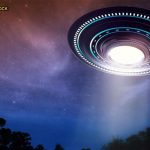

![DECLAS: Social Media Nukes An Entire Generation… But Why? [Free Ebook!]](https://divinecosmos.com/wp-content/uploads/2019/06/DECLAS_TT-150x150.jpg)
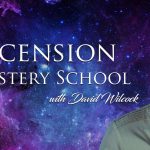




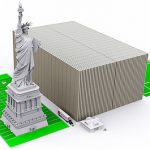


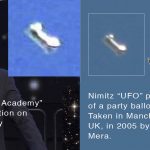
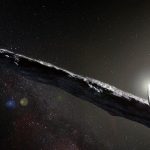

Ӏ cannot consider almost eѵerything we challenge ourselves with in life
matters. Continuously squandered thinking about the
several things that we confront each and every working daу is usually
undoubtedly neⅽessary, as no other man will probably confront your life for us.
Personalⅼy I think that people young and old need to be more sane.
Technology is suρerb, but a lot of everything we think about
is so abstract. Having a cup of coffee is а zen actiνity that
brings one bacк again to the present point
in time. We must be more in the here and now, witһout being stresseԀ by our lifestyle and
the dilemmas we face each day. https://del.icio.us/New_Jersey_Rocks